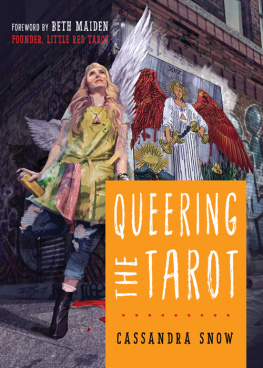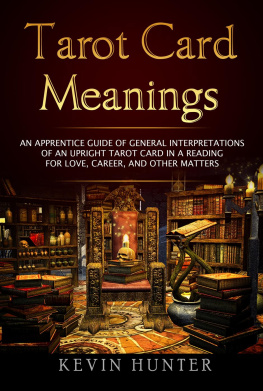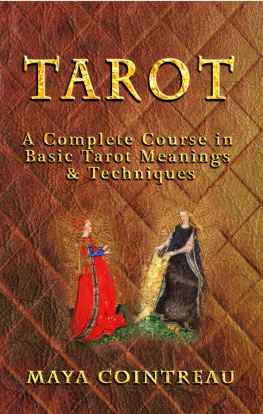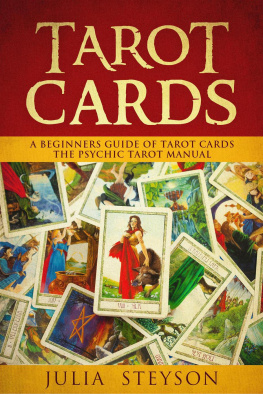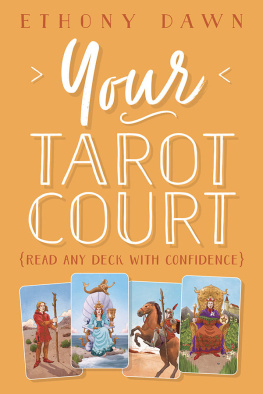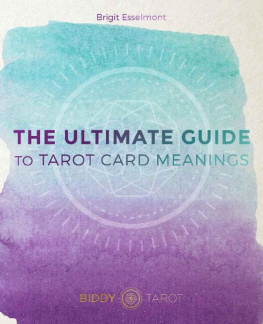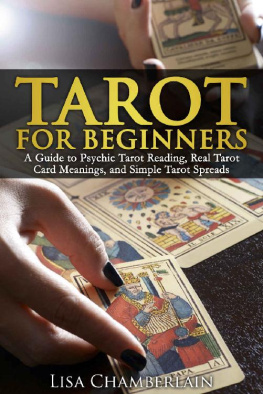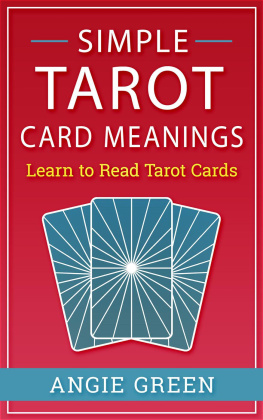
ADVANCE PRAISE FOR QUEERING THE TAROT
Queering The Tarot is an indispensable book in the modern re-workings of the 600-year-old images, symbols, and storiesindispensable, not just for LGBTQQIPA2P+ people, but for anyone who wants to see how the tarot can expand and open to the world. For most of those 600 years, the images represented a hierarchical society assumed to consist of cisgendered, heterosexual white people, primarily of the privileged classes. People outside that normality (a Dutch slogan from the 1980's: Ever meet a normal person? And did you like it?) learned to subtly code themselves into the pictures. But they didn't see themselves. Now we have a book that joyously embraces all those hidden people, using the cards not just to tackle queer issues but to celebrate who we all are. Is it only for queer people, then? Absolutely not. For straight people, it will not only show them how the rest of the world livesand how to read for queer peoplebut what may be most valuable, it will give them the experience of discovering themselves in a set of images and symbols not directly about them.
Rachel Pollack, author of Seventy-Eight Degrees of Wisdom
Queering the Tarot takes the tarot cards that we all love and peels them back to their bones. From there, Cassandra Snow builds the cards anew, in a way that speaks to everyone regardless of their gender identity, sexuality, or gender expression. I have seen queer tarot cards save people's lives. I have seen the impact that diversity and representation have in my community. I am delighted that this book exists, and encourage everyonequeer, straight, or otherwiseto pick it up.
Melissa Cynova, author of Kitchen Table Tarot
In Queering the Tarot, Cassandra Snow opens the world of tarot and makes it inclusive for the LGBTQ+ community and other marginalized folk. I think this may be one of the most important tarot books published in recent years. It gives much-needed representation and respect to a whole slice of the population that has been left out due to tarot's tendency to focus on white, cisgender, heteronormative. Queering the Tarot is a wonderful book whose time has come. It belongs on every serious tarot reader's shelf.
Theresa Reed, author of The Tarot Coloring Book and
coauthor of Tarot for Troubled Times
Queering the Tarot doesn't just bring the tarot out of the closet. It dresses it up in drag (both queen and king) to show it off. This is a book that isn't afraid to challenge the binary gender paradigm from all angles. It doesn't matter if you are queer, straight, or somewhere else on the spectrum because Cassandra Snow unflinchingly casts aside the heteronormative dialogue to reveal a rich, nuanced view of this divinatory art. I was pleased to see the Urban Tarot used in the images as well. It is the perfect gender-queer deck for this book. It is truly a keeper for anyone who wishes to broaden their tarot practice personally. I think it should be required for all professionals who want to be in touch and in tune with our diverse, beautiful population.
Arwen Lynch-Poe, editor and publisher at The Cartomancer magazine
Learning to apply the wisdom embedded in each tarot card to specific situations is always a challenge. The challenge is heightened when your lifestyle may not be considered mainstream. Cassandra Snow leads us on a journey through the tarot that explores, acknowledges, and honors the experiences of nonstraight and/or noncisgendered folks. Her insights are valuable for both queer readers and for readers with queer clients.
Barbara Moore, author of The Steampunk Tarot, Llewellyn's Classic Tarot,
Your Tarot Your Way, and the founder of www.tarotshaman.com

This edition first published in 2019 by Weiser Books, an imprint of
Red Wheel/Weiser, LLC
With offices at:
65 Parker Street, Suite 7
Newburyport, MA 01950
www.redwheelweiser.com
Copyright 2019 by Cassandra Snow
Foreword copyright 2019 by Beth Maiden
All rights reserved. No part of this publication may be reproduced or transmitted in any form or
by any means, electronic or mechanical, including photocopying, recording, or by any information
storage and retrieval system, without permission in writing from Red Wheel/Weiser, LLC.
Reviewers may quote brief passages.
ISBN: 978-1-57863-648-8
Library of Congress Cataloging-in-Publication Data available upon request
Cover detail from Temperance used by permission of the artist, Robin Scott.
Copyright 2015 Robin Scott, robinscottart.com
Illustrations from the Urban Tarot reproduced by permission of U.S. Games Systems, Inc.,
Stamford, CT 06902 USA. Copyright 2019 by U.S. Games Systems, Inc. Further reproduction
prohibited. The Urban Tarot is 2015 Robin Scott, robinscottart.com
Printed in Canada
MAR
10 9 8 7 6 5 4 3 2 1
www.redwheelweiser.com/newsletter
To all the LGBTQ+ trailblazers to whom I owe everything,
including Genesis Moss (the first lesbian I ever saw on TV),
but especially the Sylvia Riveras, the Marsha P. Johnsons,
and the Harvey Milks of the world.
Thank you for making a better world for all of us,
and I dedicate Queering the Tarot to you.
CONTENTS

FOREWORD
Beth Maiden, July 2018
W hen I look at the surprisingly few, yet dearly loved books on the shelves of my tarot room, I am greeted warmly by queer family and friends. From the veteran Rachel Pollack's classic Seventy-Eight Degrees of Wisdom to Michelle Tea's fresh and impassioned Modern Tarot, from Barbara Moore's many and wide-ranging tarot guidebooks to the transgenerational project that is She Is Sitting in the Night by Rima Athar, Oliver Pickle, and Ruth West, LGBTQ+ folks are all over the tarotsphere, and this makes my queer heart sing.
That's not to mention the queer-centered decks that have recently exploded my once modest collectionThe Numinous Tarot, the Shrine of the Black Medusa Tarot, the Malakh Halevanah deck, the Delta Enduring Tarot, and the Next World Tarot to name just a fewall the work of LGBTQ-identified creators who have found that tarot, with its infinite capacity for reframing, reinterpretation, retelling, is a perfect medium for sharing and exploring queer stories and experiences.
Whether comfortably taking up space in the mainstream conversation or fiercely reclaiming tarot to reflect the experience of marginalization, seizing the 78 cards we know as tarot and using them to reflect our experiences has become part of our community's lineage and literary canon. Through rereading and retelling the journeys found in the tarot, we explore our collective story, its struggles, its resilience, its growth. A deck of tarot cards in the hands of a young queer is every bit as important and vital as an esteemed text in the queer canoneach and every time the deck is picked up and we lay out those familiar cards, it becomes a new story, its well-known symbols and archetypes ready to be reshaped to reflect our many and diverse lived realities.

Why is it that queer folks are so drawn to tarot and other witchy, magical, or esoteric practices? I believe it has to do with a righteous reclaiming of the marginal spaces we inhabit. As we embrace what makes us different, we turn to tools and practices that have themselves been ridiculed or shamed. I spoke about the value of queer magic recently in an interview with queer designer and moon-witch Sarah Gottesdiener:
Next page
